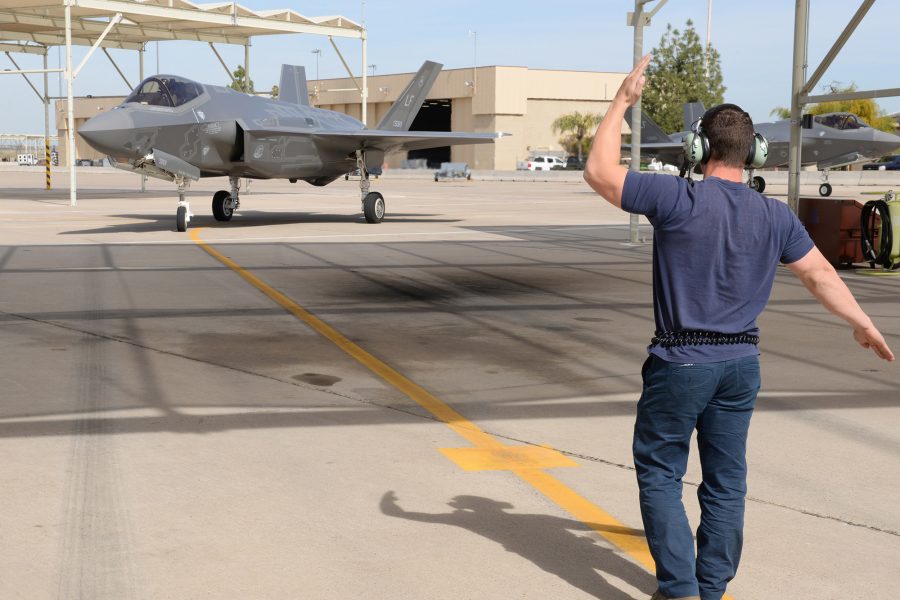The health of the industrial base earned a “C” rating, mainly due to cyber theft of intellectual property, a shortage of skilled labor, and rising costs for crucial materials, according to leaders of the National Defense Industrial Association.
In the first annual report gauging the health of the defense industrial base, the NDIA said “2020’s mediocre grade of ‘C’ reflects a business environment characterized by … concern and confidence.” While the cyber issue and labor/materials costs issues are a source of worry, there’s strong demand for defense goods in the U.S. and abroad; contractors are flush with cash; capital investment is up and imports of defense goods are down, for an overall rating of “A” in these areas, NDIA leaders said.
“China has attacked us every way they can” in the industrial sector, NDIA president retired Gen. Hawk Carlisle said in a telecon with defense reporters. Theft of intellectual property worth “trillions of dollars,” as well as China’s insistence on tech transfer as the price of doing business in that country, have robbed the U.S. of much of its defense edge, he said, noting this was the main factor in the “C” grade.
Carlisle is heartened the Pentagon is taking steps to demand that contractors at every level step up their cyber security, and said “it will be interesting to see what the grade is next year,” now that the Defense Department has put in place the Cybersecurity Maturity Model Certification program. Pentagon acquisition and sustainment chief Ellen Lord rolled out the CMMC on Jan. 31.
Carlisle explained the NDIA report is meant to create a series of standard metrics so the health of the industrial base can be gauged year after year, to not only assess its strength, but to understand “what’s working and what isn’t” among government initiatives.
Wes Haulman, who headed the study for NDIA, described the report as an “environmental scan,” which he said will grow in scope and detail in future years, to be a useful tool for the defense acquisition community and industry to spot weaknesses and take steps to mitigate them.
The NDIA study assessed a score in each of eight areas “that shape the performance capabilities of defense contractors.” Each area got a grade of 0-100, with zero being bad and 100 being excellent.
They are:
- Market competition
- Cost and availability of skilled labor and critical materials
- Demand for defense goods and services
- Investment and productivity “in the U.S. national innovation system”
- Threats to industrial security
- Supply chain performance
- Political and regulatory activities
- Industrial surge capacity.
Demand for defense goods and services registered a score of 94, as “total contract obligations issued by DOD grew from $306.7 billion in 2016 to $368.7 billion in 2018,” according to an NDIA summary. Acquisition spending rose 11 percent for aircraft, ships, and land vehicles; 33 percent for electronic and communications equipment; and 35 percent for weapons and ammunition, all over the same period. Sustainment grew 39 percent, and there was a 23 percent increase in “knowledge-based services.”
Regulations is one area that was strong two years ago and is now worrisome. Although the Trump administration pledged to reduce regulation—and ordered that two regulations be eliminated for every one being added to federal acquisition rules—the “unexpected effect” is there’s now a backlog of hundreds of new rules that could simplify acquisition, but can’t go into effect until older rules are consolidated or removed, Carlisle said. He’s discussed it with Pentagon leaders and expects action.
“The law has to be turned into policy” that accomplishes its intent, he said.
Carlisle said the study “did not include recommendations,” but is aimed at providing data so government—particularly Congress—and industry can draw their own conclusions.
Of the areas called out for concern in the report, Carlisle said “it took 30 years to get where we’re at. We’re not going to fix it overnight.”

